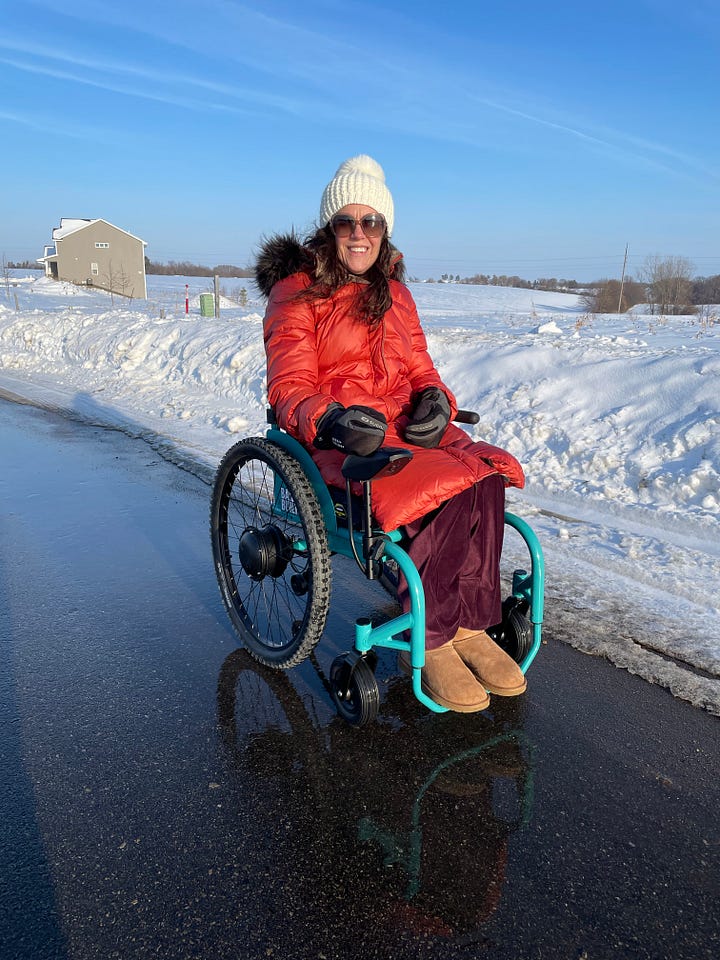GLOSSARY
Attack / Episode / Exacerbation / Flare-up / Relapse - the period when someone with MS experiences worsened symptoms. Must be at least 24 hrs, may continue for months.Disease Modifying Therapies (DMTs) - the drugs given for MS, not a cure, but hopefully slow progression.
Food and Drug Administration, FDA - the federal US organization that approves medication.
Invisible symptoms - the symptoms others can’t see that someone with MS has, such as troubles with bladder and bowel control.Remission - the period between relapses in RRMS.
Did you know there are different types of MS? Multiple sclerosis is the collective name for the disease, but there are five main types: relapse remitting (RRMS), secondary progressive (SPMS), primary progressive (PPMS), clinically isolated syndrome (CIS), and benign.
Relapse remitting is the most common form of MS, 80-85% of people diagnosed are diagnosed with it. It comes and goes, getting either a little bit or significantly worse after each episode. It affects women four times more than men, the majority of people are diagnosed between the ages of 20-50, it is more prevalent further away from the equator and tied into a lack of vitamin D, and it is not thought to be inherited.
In RRMS, symptoms and disability build up over time, and historically after around 10 years approximately 50% of people with RRMS are diagnosed with secondary progressive MS, which is often more visible to onlookers as by now walking might be affected. However, in the last few years there have been 20+ RRMS DMTs approved by the FDA, the big ones being Aubagio and Ocrevus that you might have seen advertised on tv, so hopefully less people will move onto having SPMS in the coming years.
DMTs for RRMS
When I was diagnosed in 2001 there were only three DMTs available (and two were similar). They’re nicknamed the A-B-C drugs (get it - ABCs of MS??!!), Avonex, Betaseron, and Copaxone.
Avonex is a weekly self-administered intramuscular injection that I did soon after my diagnosis for six months but quit due to the nasty side effects. Some people taking it get horrid flu-like symptoms immediately following the shot. I felt as though I’d been hit by a truck, with bone and muscle aches, brutal headaches, chills and fever. I did the injection (which hurt!) on Saturday evening and tucked-up in bed for the night and next day, and my husband who worked during the week hung out with our children. My neurologist and I weighed-up the benefits vs lifestyle and decided I’d stop and give Copaxone a go.
I did Copaxone for six months, too. Copaxone is a three-times a week self-administered subcutaneous injection and for some it feels like a bee sting. I found the intensity of the shot intolerable. I got welts and bruises around the injection site and crazy stinging and itching. Both offer approximately 30% benefits, so I decided to focus on alternative therapies instead. By the time the new wave of MS treatments were available I’d had the disease too long to take them.
During this time, my main symptoms were fatigue, numbness in my right arm and hand, and some balance trouble when I was too warm. I also had bladder weakness before the onset of an episode. To an onlooker I looked like I was doing great. Someone with RRMS may be doing great, but they may also have ‘invisible’ symptoms they deal with behind the scenes.
Secondary progressive is the diagnosis given to someone originally diagnosed with RRMS when it reaches its second phase. It’s more progressive due to a build-up of nerve damage, and people with it might continuously experience symptoms (non-active SPMS), or continue to have relapses as well as progression (active SPMS).
I was diagnosed with SPMS after 15 years. I had experienced weakness in my legs and loss of balance during my time with RRMS, but not enough that I needed assistance. In the seven years since having SPMS I’ve gone from using a cane to crutches, to crutches and a scooter or wheelchair, to using a wheelchair full-time. I’m also experiencing other symptoms that were there when I had RRMS, but have become worse such as weakness in my arms and hands, bladder and bowel issues, digestive problems and depression.




DMTs for SPMS
The DMTs used for RRMS can be used to treat someone with active SPMS, however, those therapies aren’t authorized for use for non-active SPMS. To get around this and try to slow progression some neurologists prescribe a bi-annual infusion that isn’t an official MS drug, Rituxin also used to treat certain blood cancers and some autoimmune diseases, including rheumatoid arthritis. I’ve been doing it for the last few years and have minimal side-effects, sometimes I feel nauseous and head-achy for a few days after, but nothing terrible.
Primary progressive (PPMS): 10-15% of women and men equally, are diagnosed with PPMS which as the name suggests is a progressive version of the disease from the beginning. Onset of PPMS tends to be approximately 10 years later than RRMS, and it often affects the legs faster leading to quicker disability and medical issues.
DMTs for PPMS
Many of the same DMTs used for RRMS are used for PPMS, however as already noted, most of these are newer drugs so the jury is out on their efficacy.
Clinically isolated syndrome (CIS) & Benign MS are both types that if you have to have MS, you want. A person with CIS experiences one episode, but that’s it; and with benign MS, the MS is very mild and the person has few relapses with few or no symptoms. If you hear someone talking about having MS who’s doing great with no symptoms, or who claims to have cured themselves, they may well have one of these.
DMTs for CIS & Benign MS
Depending on MRI results someone with CIS or benign MS might be prescribed RRMS DMTs.

















Share this post